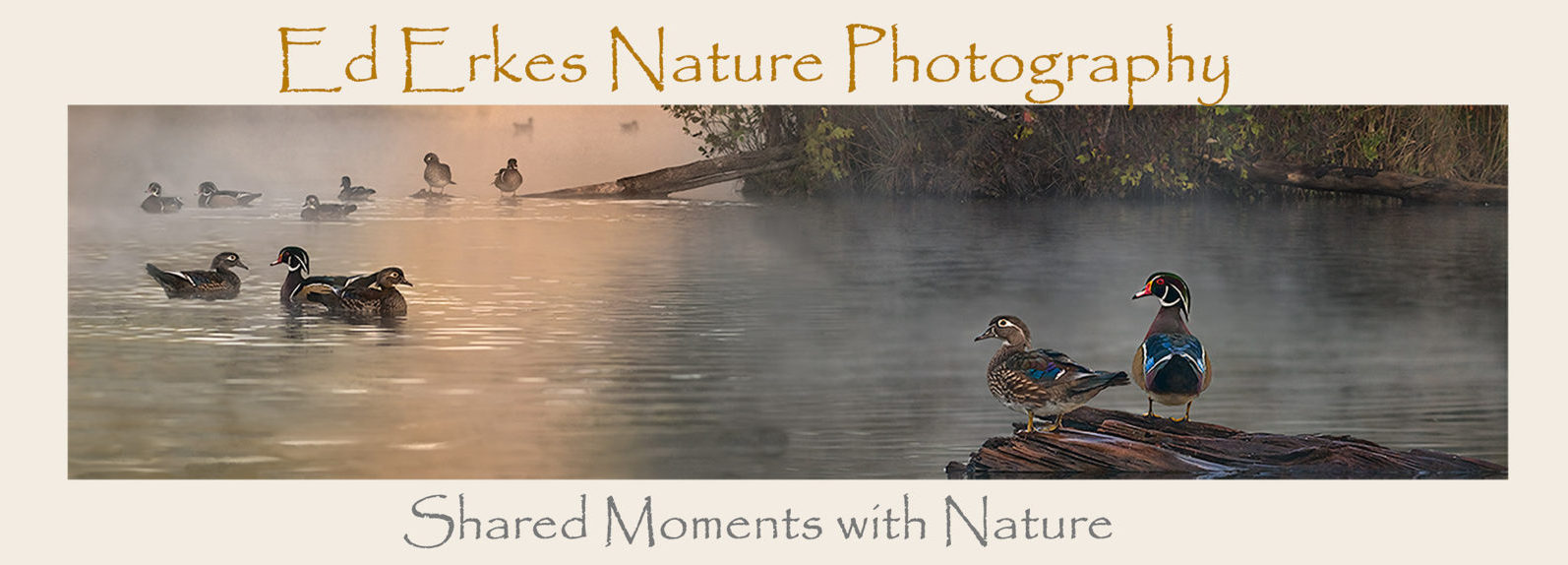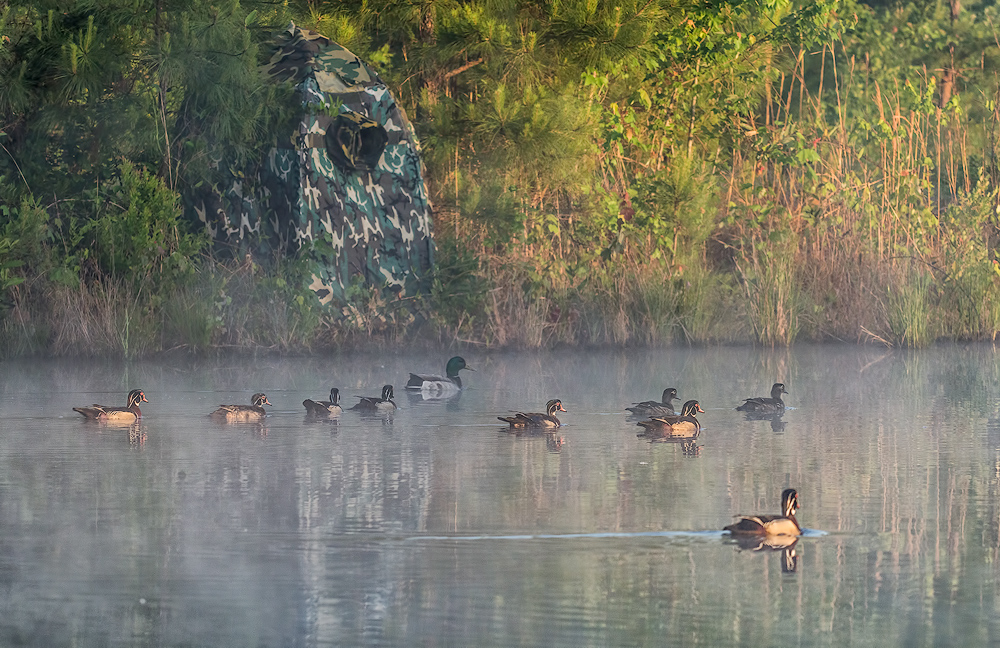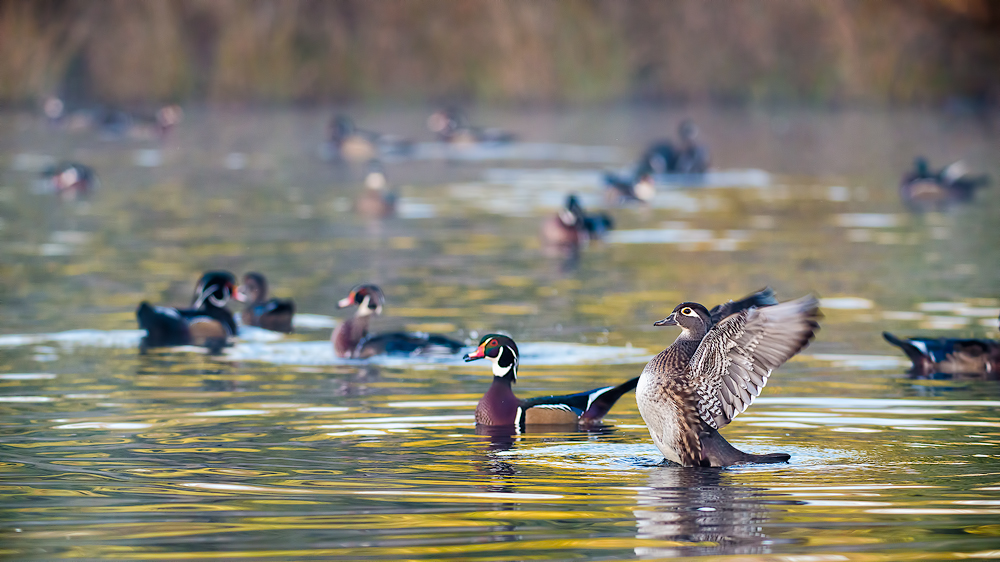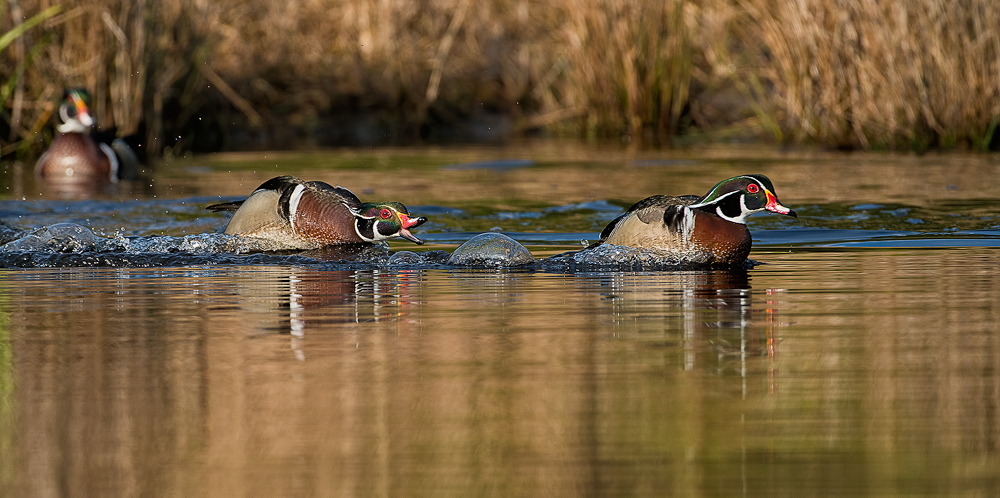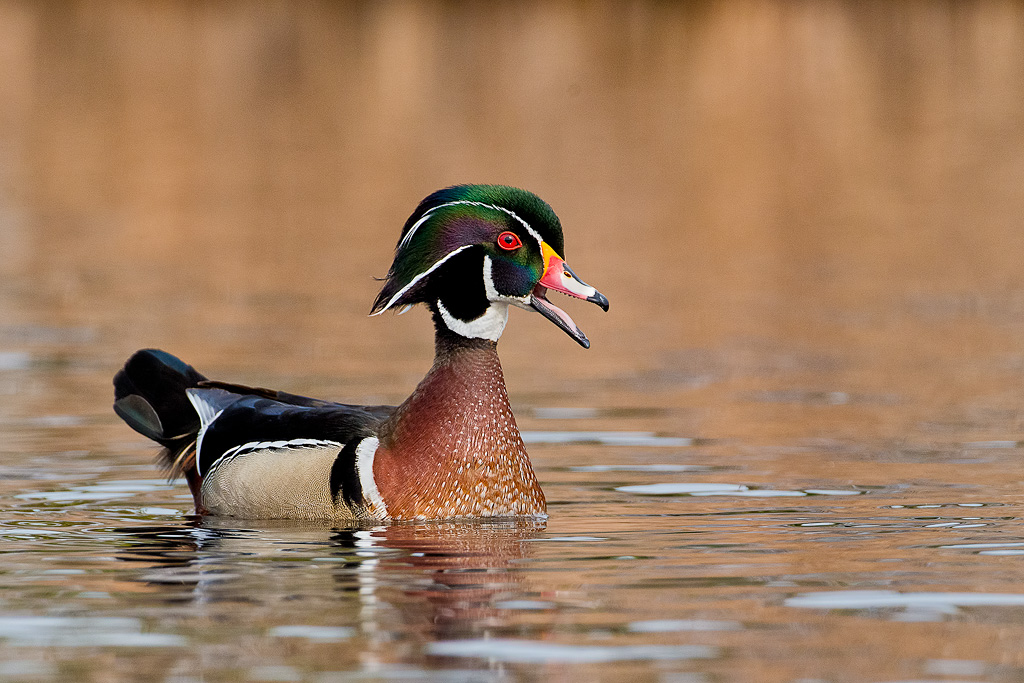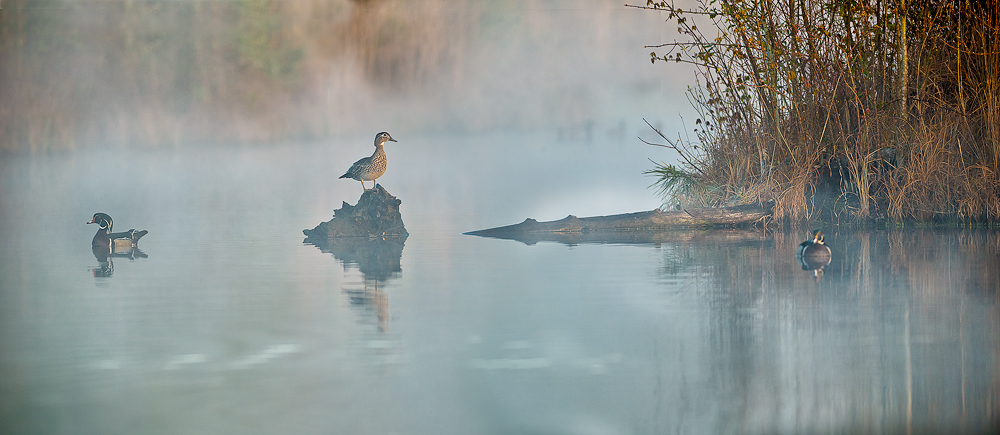Over the last two and a half years I’ve spent more than 260 hours observing and photographing the wood ducks on my pond. On at least 110 different days, spread across all four seasons, I’ve hiked the 200 yards down to my pond for the sole purpose of watching and photographing wood ducks.
And I still look forward to each opportunity to spend time with them. It may be hard for many to understand why I am so drawn to them and it is not particularly easy for me to explain. Those that have a love for nature and the outdoors will find it easier to understand. First, the ducks themselves are such beautiful, fascinating creatures with so many interesting behaviors. Second, the wood ducks are close by. We’re neighbors, sharing the same land. I’ve always been keenly interested in the nature around me; much less so in the natural world of more distant areas. That is probably the reason I have never had any desire to go on a photo safari to Africa or some other distant region. Third, and possibly most importantly, time spent in nature can have a calming, refreshing effect on the heart and soul. Stress melts away, the cluttered mind clears. Life slows down for a while.
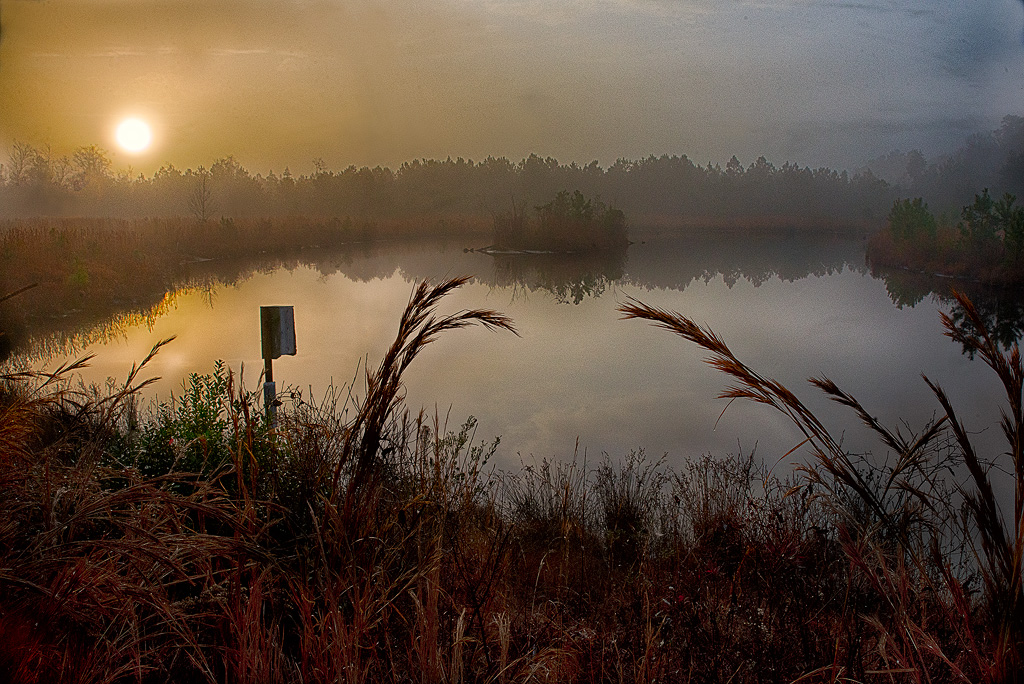
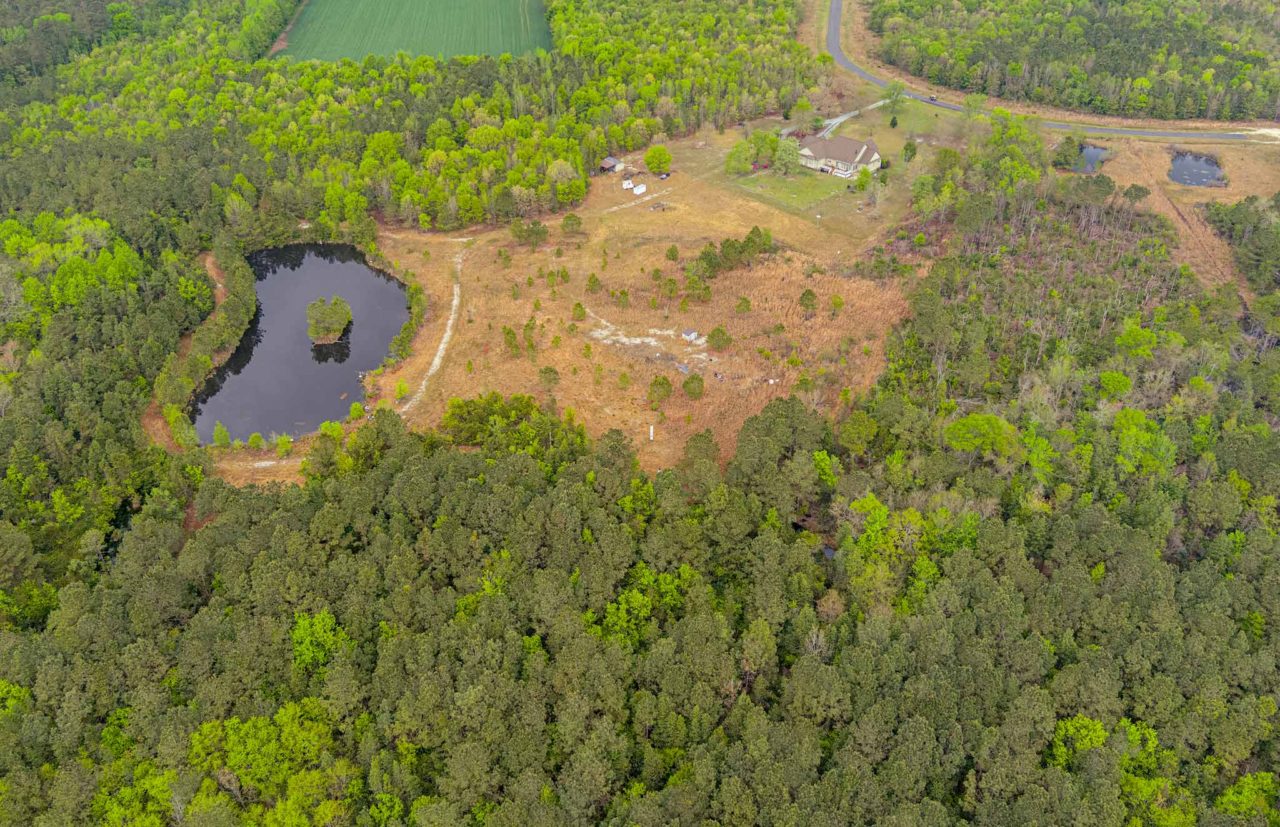
Below is my attempt to describe in words what I experience on a typical morning:
After two and a half years of observation, the wood ducks on my pond still remain quite skittish. Any visible close approach will cause them to take flight. I have to make sure I’m in my blind before the ducks arrive. Fortunately their arrival time is pretty consistent throughout the year, beginning about 30 minutes before sunrise. In the predawn darkness I hear the buffeting sound of braking wings as the ducks descend and splash down on my pond. There isn’t much to see in the dim light—dark forms against a gray sky and flashes of white bellies as the ducks twist and turn, spilling wind from their wings as they descend to the water. As the ducks draw closer to the water, the flashes of white increase as the flapping wings alternately cover and reveal their white bellies.
In addition to the sound of wings flapping and the splashdowns, another sound heard is the occasional loud “oo-eek” arrival call of the hen.
Once on the water, the dark forms glide across the pond like ghosts, especially so on foggy mornings. The flashes of white continue─the exposed white chins of ducks as they turn and face my blind or perform the even more conspicuous bill jerk displays (brief upward jerks of the bill, exposing their white chins to other ducks). Less frequently, larger flashes of white occur as ducks perform wing flaps—signs of nervousness or sexual tension, or simply the drying of wings after bathing.
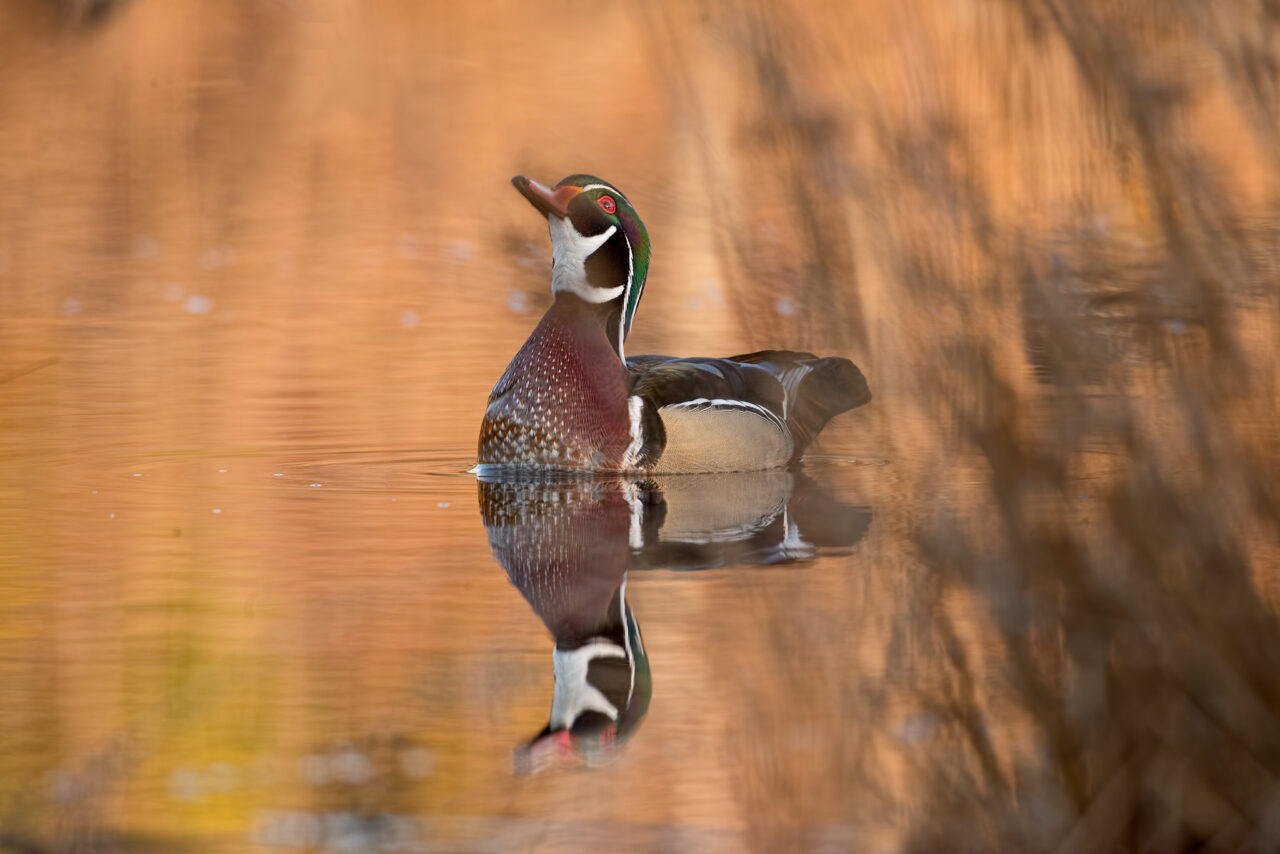

The day brightens gradually until sunrise. As the sun strikes the treetops on the far side of the pond, bright areas of reflection appear on the pond surface. I concentrate on photographing the ducks as they swim through the colored reflections. Finally, about twenty-five minutes after sunrise, the sun clears the trees behind me and lights up the whole pond. The direct sunlight striking the iridescent feathers of the male wood ducks reveals the incredible beauty of this species of waterfowl.
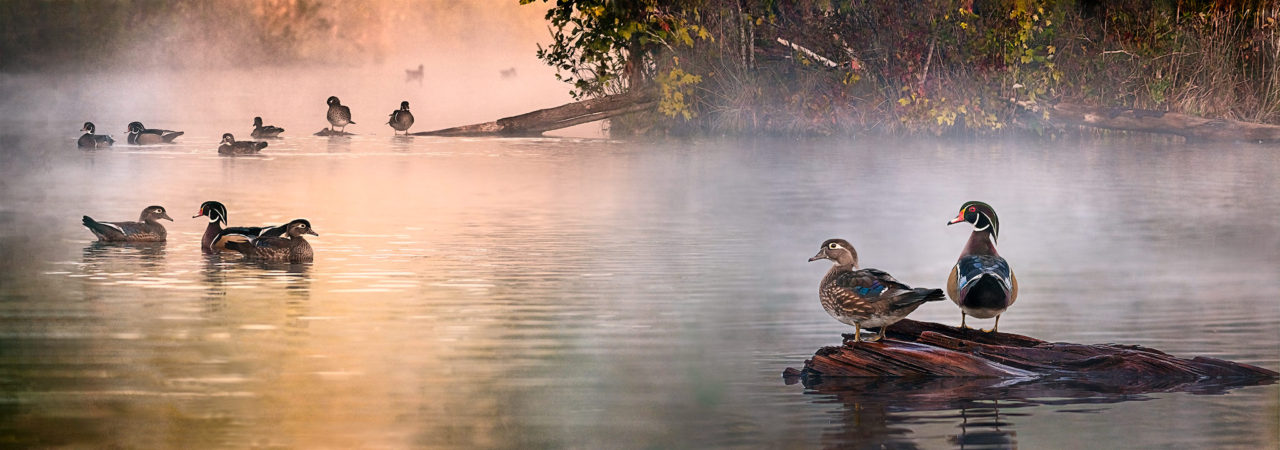
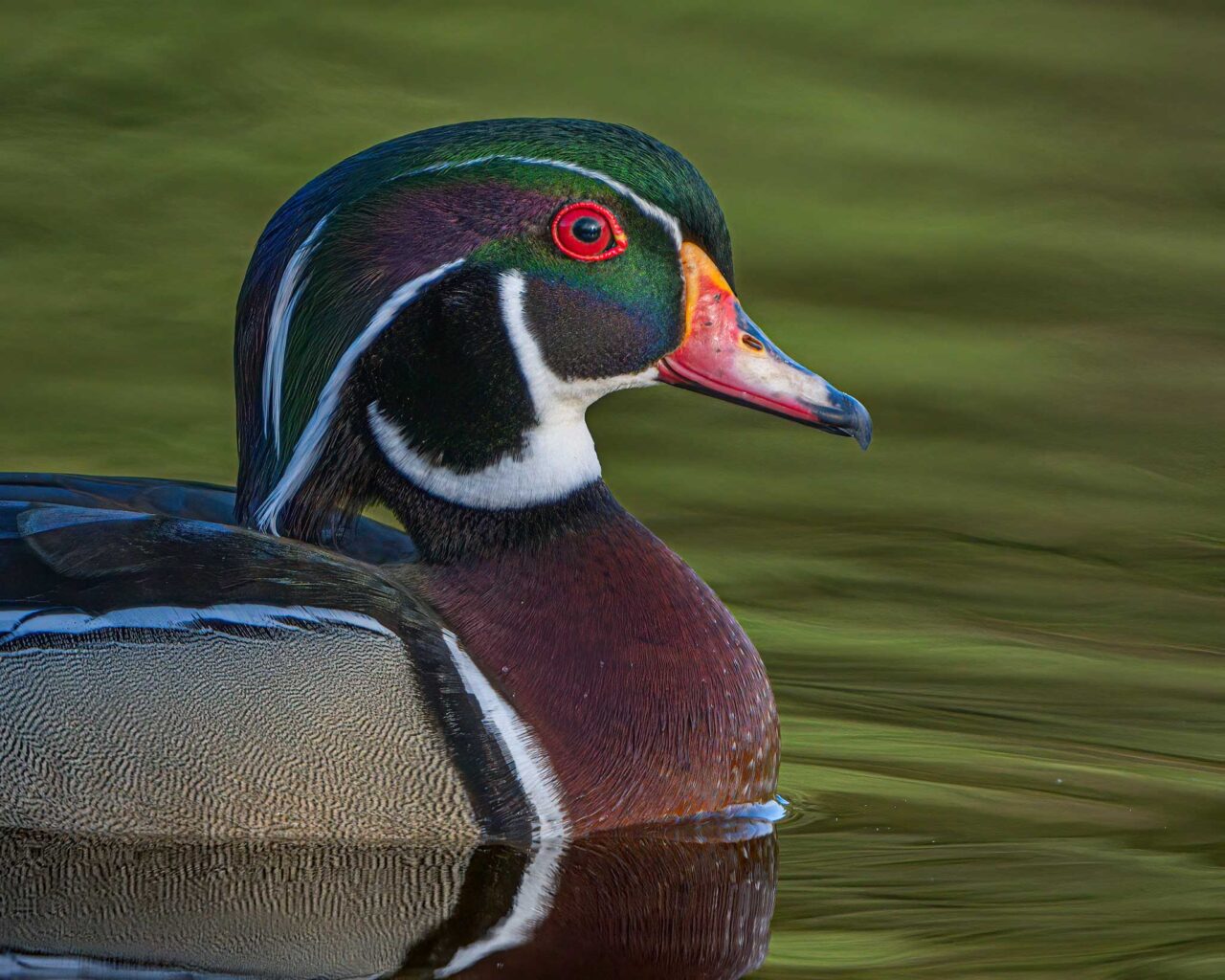
Once on the pond, the ducks come alive with sound and activity. Splashes abound briefly as the ducks first feed on the corn that has been tossed into the shallow shoreline waters. Additional splashing sounds occur later as the ducks engage in courtship battles where rival males and females chase one another. Intermixed with the splashing are periodic buffeting sounds of wing flaps.
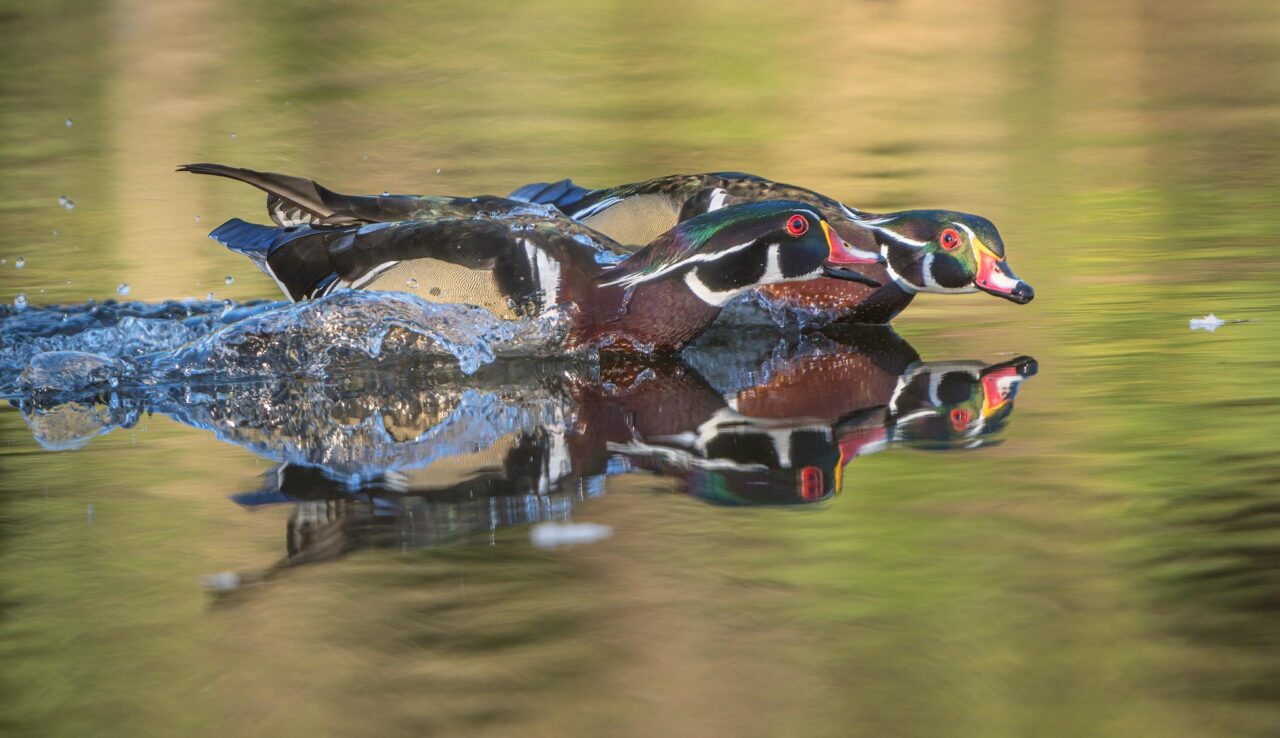
The vocal calls are quite distinctive, unlike any other ducks. The male calls are generally much softer than the females. All the male calls, save one, are similar in sound, variations of a quiet reedy whistle that can be phonetically described as “jeeeb.” These sounds can occasionally be heard as soft stuttering calls, but more commonly are longer whistles that vary in intensity and duration.
The female calls are totally different than the males. They have several soft stuttering calls not easily heard, but also two very loud piercing calls. The first is the hen’s loud “oo-eek” call mentioned earlier. By varying its intensity and duration, it can serve as a contact or arrival call, or an alarm call when danger is nearby. It is the most commonly heard call by humans since our presence usually results in the alarm call and the subsequent flushing of ducks from an area.
The other distinctive call of the hen is the courtship coquette call, a loud “ker-wee” call that can be heard up to a half mile away. It is the hen’s “come hither” call that invites courtship and will generally attract any unattached males within hearing distance. As the female ends the “ker-wee” call, she often dips her bill into the water–causing a distinctive modulation of the sound. As the drakes approach they will extend their necks vertically, raise their crests and give their “jeeb” call ─an apparent variation of what is called the “burp” display.
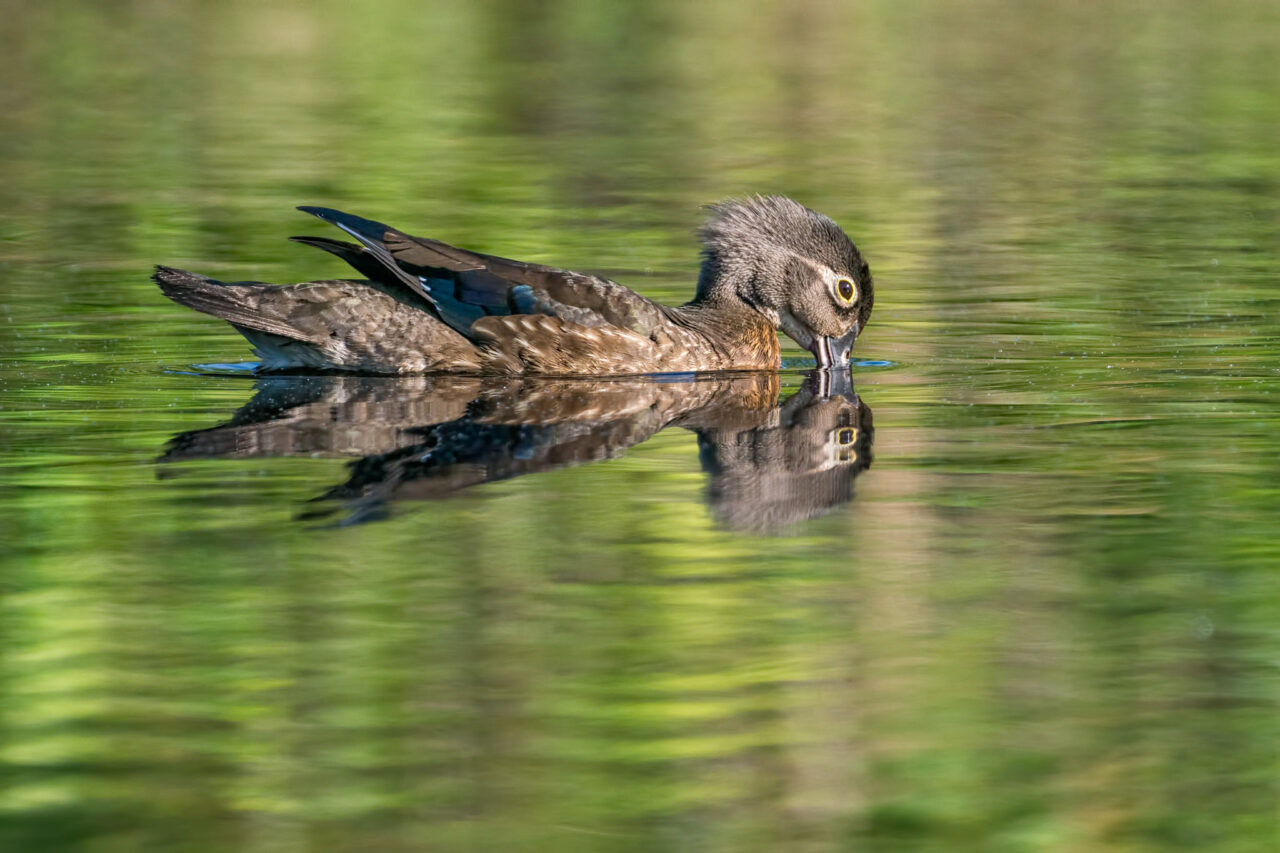
The activities of the ducks eventually slow down. They rest on the water, loaf on logs and eventually leave. Their departure times vary according to the season. Sometimes they leave shortly after sunrise. Other times some will remain until late morning. I remain in the blind until they depart.
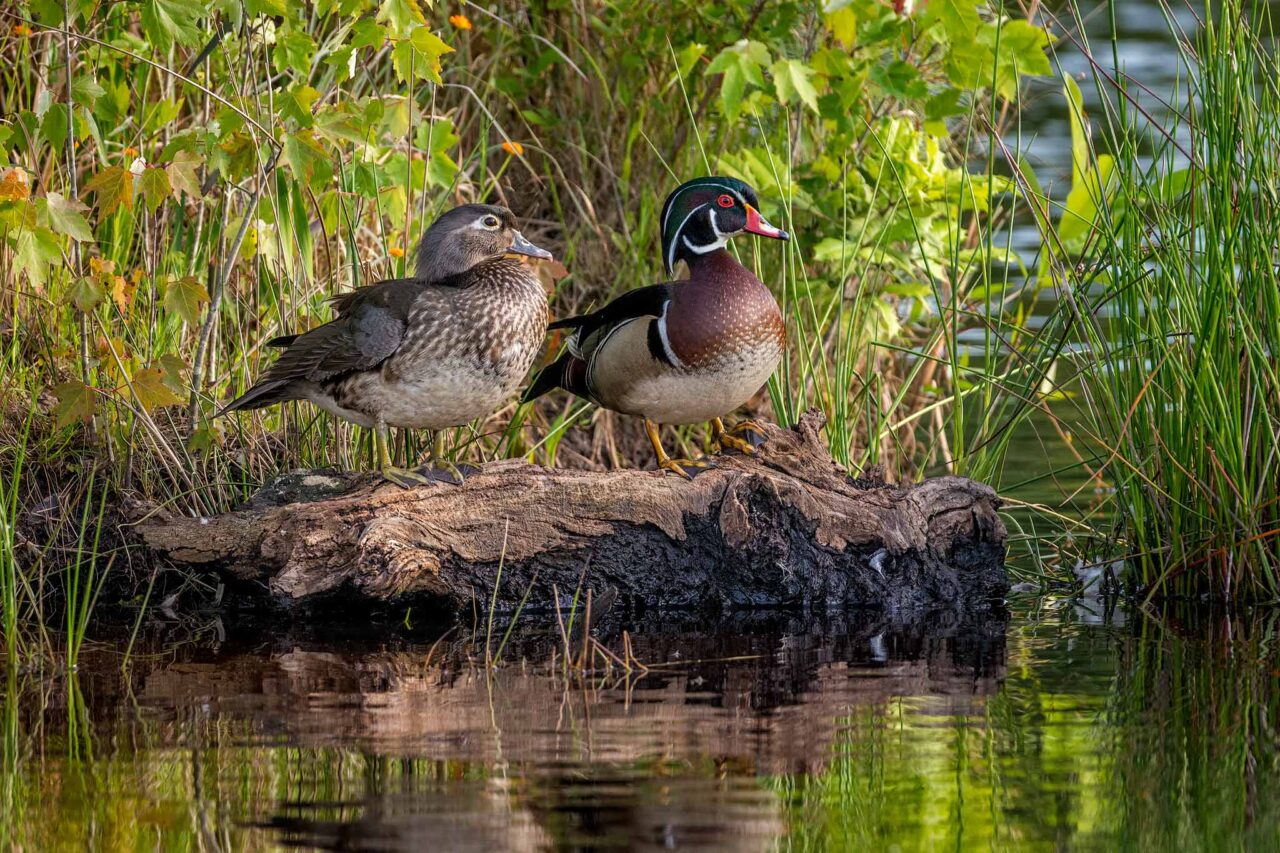
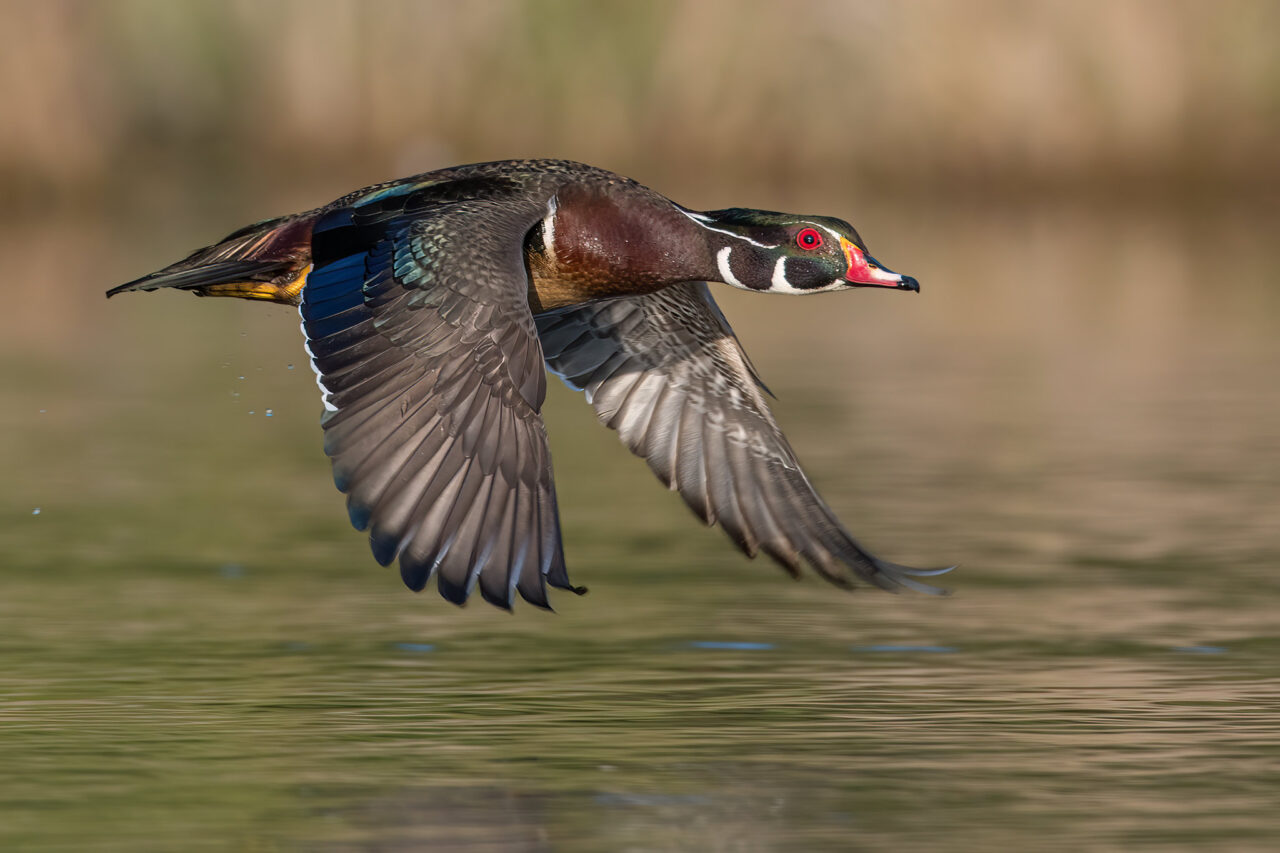
When despair for the world grows in me
and I wake in the night at the least sound
in fear of what my life and my children’s lives
may be,
I go and lie down where the wood drake
rests in his beauty on the water, and the great heron feeds.
I come into the peace of wild things …
I rest in the grace of the world, and am free.
Wendell Berry
